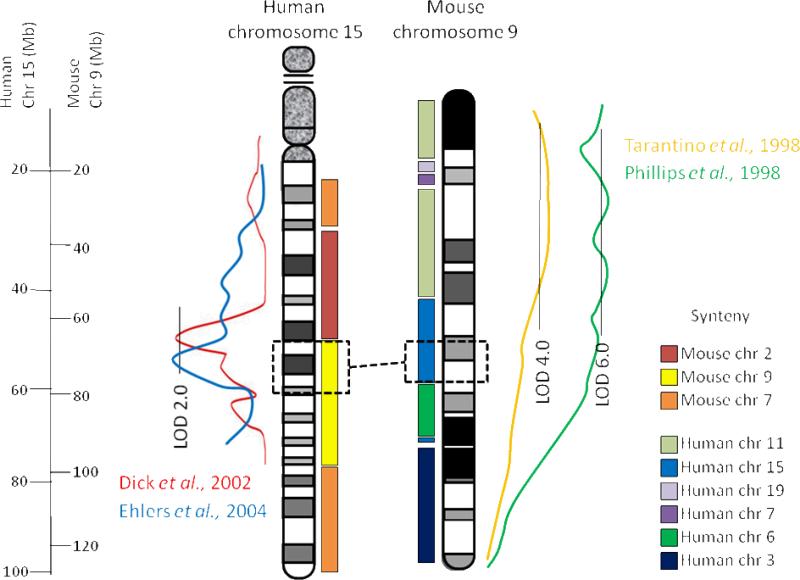Figure 1.
Synteny between human chromosome 15q and mouse chromosome 9 is illustrated with the colored bars. Proximally to distally, human chromosome 15 shares primary conserved regions with mouse chromosomes 7, 2, 9, and a different region of chromosome 7. Similarly, mouse chromosome 9 shares regions with human chromosomes 11, 19, 7, 15, 6, and 3. For both mouse and human there are smaller syntenic regions that we are not able to illustrate in detail here. Lines depicting LOD score plots are adapted from published QTLs to illustrate the statistical strength of linkage for human alcohol dependence QTLs (blue line from Ehlers et al. 2004; red line from Dick et al. 2002) shown to the left of human chromosome 15. The evident peaks were near 53 and 50 Mb, respectively. The analogous LOD plots for mouse alcohol preference QTLs are shown to the right of mouse chromosome 9 (orange line, Ap5q, from Tarantino et al. 1998; green line, Etp5, from Phillips et al. 1998). The dashed black boxes and line demonstrate the narrowed region of interest based upon mutual synteny of the mouse and human QTLs. The region of human chromosome 15 in the dashed black box is syntenic to the region of mouse chromosome 9 dashed black box, but in reverse orientation, so the most distal gene in human chromosome 15 region is the most proximal in mouse chromosome 9 region and vice versa. Comparison suggests that the human QTL is in the more proximal section of human 15 syntenic with mouse 9, and the more distal section of mouse 9 syntenic with human 15.

